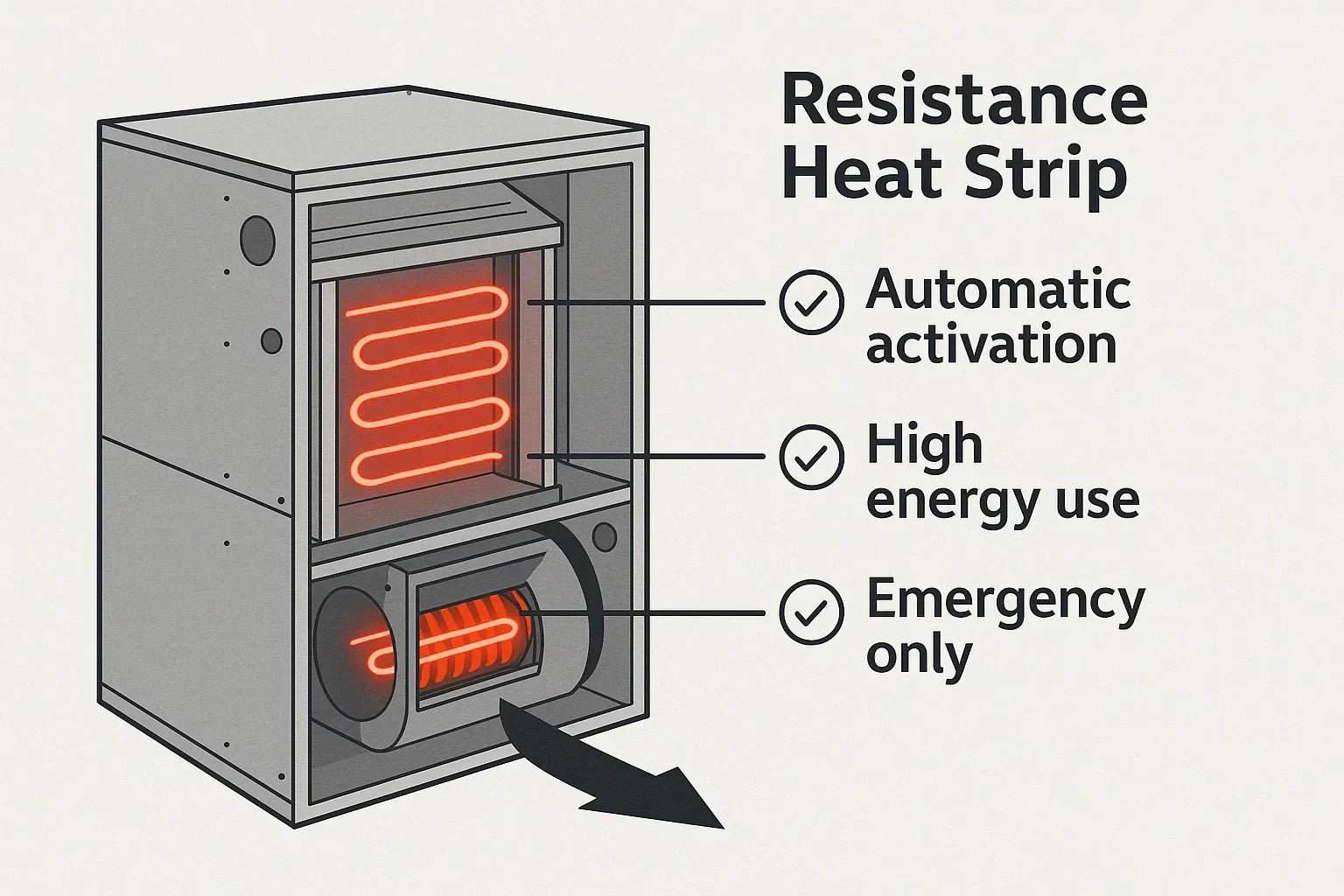If you’re relying on a cold climate heat pump to get through winter, you’re already on the energy-efficient path. But here’s the thing — even the best heat pumps need backup when temperatures drop deep into the negatives. I’ve seen it too many times: a homeowner installs a great system, then wakes up to 5°F temps and no heat because they didn’t plan for auxiliary support.
Let’s talk about your best options for backup heat, and how to pair them with your heat pump for comfort, safety, and savings — even in the harshest weather.
Why Backup Heat Matters in Cold Climates
Cold climate heat pumps are amazing pieces of technology. With inverter-driven compressors, low-temperature refrigerants, and variable-speed fans, they can operate efficiently down to -5°F or lower. But once the outdoor temperature hits a system’s minimum operating limit — or frost starts reducing coil efficiency — performance dips.
Backup heat does three key things:
-
Keeps your home warm during extreme cold snaps
-
Prevents coil damage and system overwork
-
Protects against frozen pipes and comfort disruptions
In some regions, backup systems aren’t just recommended — they’re required by local utilities or rebate programs. That’s especially true if you’re in places like Minnesota, Michigan, or upstate New York.
Electric Resistance Heat (Heat Strips)
This is the most common and straightforward backup solution. Electric heat strips are installed inside your air handler and automatically kick in when the heat pump can’t keep up.
Pros:
-
All-electric (no gas needed)
-
Simple to integrate
-
Automatically triggered
Cons:
-
High electricity consumption
-
Expensive to operate for long periods
Best For: Homes without gas lines or in areas where extreme cold is rare but possible.
📘 Trane explains how auxiliary (backup) heat strips support your heat pump
Dual-Fuel Systems (Heat Pump + Gas or Propane Furnace)
In a dual-fuel system, your heat pump handles mild and moderate cold. When it gets really cold, the system automatically switches to a gas or propane furnace.
This setup offers the best of both worlds: the efficiency of a heat pump for most of the season, and the raw heating power of a furnace when you need it most.
Pros:
-
Very efficient across temperature ranges
-
Lower operating cost in extreme cold
-
Automatically switches based on outdoor temps
Cons:
-
Higher upfront cost
-
Requires gas or propane hookup
Best For: Cold-climate homes with existing ducts and access to fuel.
📘 Trane explains how hybrid heat systems work
📘 Use the Mass Save Heating Comparison Calculator to compare systems by cost and performance
Ductless Systems with Dedicated Electric Backup
If you’re using ductless mini-split heat pumps in individual rooms, you won’t have a centralized air handler for heat strips. Instead, many homeowners use supplemental heat like:
-
Baseboard electric heaters
-
Wall-mounted electric panel heaters
-
Plug-in radiant or convection units
Pros:
-
Zoned backup
-
Easy to install in specific rooms
-
No ductwork needed
Cons:
-
Higher install cost if you need multiple units
-
May require electrical upgrades
Best For: Zoned or retrofit installations where ducts aren’t available.
📘 See PNNL’s guide on cold climate heat pump sizing and backup heat selection
Hydronic Systems and Boiler Integration
Some homes already have radiant floor heating or baseboard hot water heat from a boiler. You can use this system as backup for a cold climate heat pump, especially if the boiler is relatively new and efficient.
Pros:
-
Comfortable radiant heat
-
Great for supplementing zoned systems
-
Doesn’t rely on ductwork
Cons:
-
Not ideal for new installations
-
Complex integration with thermostats and controls
📘 DOE: Overview of heat pump systems and hybrid setups
How to Choose the Right Backup Heat for Your Home
Here’s a quick breakdown of what to consider:
| Factor | Recommendation |
|---|---|
| Climate Zone | Dual-fuel or hydronic for frigid winters |
| Existing Infrastructure | Use what’s there (e.g., gas furnace or boiler) |
| Fuel Availability | Electric-only setups in remote areas; gas where accessible |
| System Controls | Look for smart thermostats with programmable balance points |
| Efficiency Goals | Demand defrost and inverter-driven systems reduce need for backup |
📘 Trane: Maintenance and performance tips for cold weather heat pumps
Smart Controls Make Backup Smarter
A major upgrade in 2025: smart thermostats that manage backup staging.
Many high-end systems now allow you to:
-
Set a balance point — the outdoor temp where backup heat kicks in
-
Use sensors and utility rates to choose when backup is cheapest
-
Monitor usage remotely and adjust comfort priorities
This keeps costs down and ensures the backup only runs when absolutely necessary.
Final Thoughts from Alex Lane
Think of backup heat like a good winter jacket — you might not wear it every day, but you’ll regret not having it when the temperature drops. The goal isn’t to run backup constantly; it’s to protect your comfort and your system’s performance when it matters most.
Whether you go with a simple electric strip or a high-efficiency dual-fuel system, choose a solution that matches your climate, home layout, and fuel access. It’s one of the smartest long-term decisions you can make for a reliable, resilient HVAC system.
👉 Learn how to save big on your system upgrade: Cold Climate Heat Pump Rebates and Tax Credits in 2025
And if you want the full breakdown of the best systems for freezing weather, don’t miss our main guide:
👉 Best Heat Pumps for Cold Climates in 2025
Alex Lane
Your Home Comfort Advocate







